Sharp, painful sensations in the lower abdomen, urge to urinate - cystitis produces unpleasant symptoms, the first signs of the disease in women are exactly the same.This is an inflammatory process that occurs in the inner walls of the bladder.The causes and conditions for the development of the disease in women coincide much more often than in men.
What is cystitis?
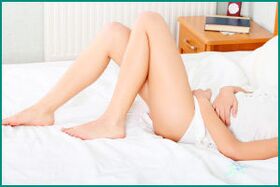
The bladder is a muscular organ located in the pelvic cavity, its upper part, which collects urine before exiting through the urethra.This is how the terminal section of the urinary system is arranged in the male and female body.The bladder cavity is gradually filled through two ureters, which are pathways for fluid filtered from the kidneys.When the organ fills more than half its volume, the person feels the need to urinate.This is an unconditioned reflex.
The internal environment of the urinary system is sterile, just like the urine excreted in a healthy person.The ingestion of infectious agents capable of multiplying in these conditions, as well as chemical irritants and allergens, leads to the development of cystitis, the first symptoms of which will immediately indicate alterations in the chain described.
Inflammatory, allergic and chemical irritation of the bladder can be due to various reasons.The ways in which irritants get inside also vary.
For women, the so-called ascending path is more typical, that is, the pathogen enters the cavity and rises from the external urethra.
The same type of cystitis can be found in a small child, especially in a baby, for whom there is no adequate home care or there is pathology of the postpartum period, organic disorders.
Causes of appearance in women.
It is necessary to clearly understand the difference between the causes and conditions that started the signs of cystitis in women.The causes are infectious agents and non-infectious factors.The first group includes:
- opportunistic microorganisms;
- pathogenic microorganisms;
- Causative agents of sexually transmitted diseases.
Opportunistic microbes are so called because they exhibit their virulent properties when exposed to suitable conditions.Typically, the causative agents of diseases of this type are representatives of the normal biocenosis of the vagina or intestinal microflora.They are constantly present on the skin of the genital organs and act as a protective barrier.As soon as a girl suffers from hypothermia and is treated with antibiotics, which suppress not only the pathogenic but also the normal flora, the number of representatives of the microbiocenosis grows rapidly.When they reach a critical mass, they stop performing a barrier function, change the pH value of the mucous membranes and themselves become the cause of the development of inflammation.
Also, multiplying, microbes spread to areas unusual for them, for example, the urethra and bladder.Pathogenic pathogens become a source of inflammatory reactions during the stay of patients in a hospital of any profile, but most often one can become infected in maternity hospitals and in obstetrics and gynecology departments.It is in them that the microorganisms that cause nosocomial infections circulate.
These pathogens differ from the usual ones in that during the process of repeated passage through weakened organisms, they acquire new characteristics, for example:
- salmonella, which is transmitted by airborne droplets;
- resistance to a large number of antibiotics;
- immunity to broad-spectrum antibacterial drugs;
- the ability to use substances unusual for this species as a nutritional substrate.

The clinical course of cystitis caused by pathogenic and opportunistic microorganisms that acquired new properties during development is characterized by painful manifestations.It is more difficult to combat this cystitis, since the range of antibacterial drugs is reduced.
Sexually transmitted diseases cannot occur in isolation from the urinary organs due to the peculiarities of their anatomical structure.The most common are gonorrhea, trichomonas urethritis and cystitis.Through the urethra, which in women is wider and shorter than in men, bacteria enter the bladder cavity and begin to multiply there.
Non-infectious causes are divided into chemical and allergic factors.Chemical irritants can enter through the blood, filtered by the kidneys.They can be medicinal substances, harmful agents of an industrial nature, food components.
Allergic agents are evidence of a profound suppression of the immune system, which reacts with hypersensitivity to common substances.
Additional conditions that contribute to the development of inflammation are factors such as: hypothermia, wearing synthetic underwear, non-compliance with the rules of personal hygiene, acute and chronic gynecological diseases, childbirth, eating irritating foods and pregnancy.
Early signs
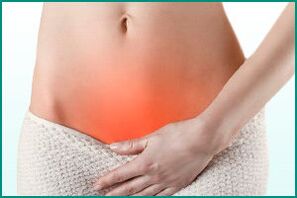
The first signs of cystitis in women already require treatment from a specialist and the patient's attention to her body.You can suspect the development of inflammation in the bladder by detecting a primary syndrome:
- constant itching in the external genital area;
- the appearance of discharge from the urethra;
- painful and annoying pain after urinating;
- pain along the urethra;
- increased need to go to the bathroom;
- color changes, urine clarity, appearance of visible sediment.
If proper attention is not paid and the disease is not treated, the first symptoms gradually worsen and the acute disease becomes chronic.
progressive pathology
The medical history of a patient with chronic cystitis can become quite voluminous if therapy is ignored or additional rules are not followed.Acute symptoms quickly lose their overt character and disappear, without causing significant discomfort.
But there are a number of signs of inflammation progression:
- the addition of a secondary infection in the kidneys;
- attacks of exacerbation of infection are accompanied by fever;
- the general condition worsens;
- the amount of urine excreted is small;
- The urine has a strong odor, is cloudy, and may be mixed with pus or blood.
Chronic cystitis does not occur in isolation;It is complicated by inflammatory processes in the kidneys and gynecological pathologies.
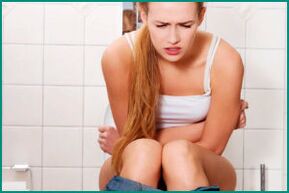
The body's resistance gradually decreases, infections of other organs provoke exacerbations of cystitis and disappear with an increase in body temperature, symptoms of general intoxication, severe weakness and malaise.
The urge to urinate is frequent, but the amount of fluid released is small.This is because it irritates the bladder receptors too much due to altered pH balance and pathological impurities.
Excretion of urine is painful, spasmodic pain does not allow rest even at night.
The suprapubic region is tense, palpation of the abdominal muscles in the lower abdomen is difficult.
The urine has an unusual unpleasant and pungent odor.When observing it you can notice sediment falling to the bottom.
Classic signs of acute and chronic cystitis.
An acute process occurs for the first time after contact with an infectious agent, chemical irritant, or allergen.The symptoms appear clearly and manifestly: sharp pain when urinating, uncomfortable emptying of the bladder, pain in the lower abdomen, itching and burning at the exit of the urethra.There may be a brief increase in temperature, nausea or weakness, loss of appetite, and there may be an association with worsening of symptoms after ingesting irritating foods or drinks.
Chronic pathology is characterized by the disappearance of symptoms, the presence of constant discomfort in the suprapubic region and persistent pain.In the remission stage, the patient feels quite healthy.Exacerbation occurs after hypothermia, consumption of irritating foods or drinks, or repeated contact with an allergen.
Types of cystitis in women.
Bladder inflammation is classified according to several criteria.
The main types of cystitis include the following:
- by the nature of the process: acute or chronic;
- due to appearance: bacterial, chemical or allergic;
- by associated factors: postpartum, secondary, postoperative.
Postoperative cystitis occurs after an abortion, cesarean delivery, and urine is released through a catheter.It is this medical instrument that can become a source of infection.
Features of postpartum cystitis.
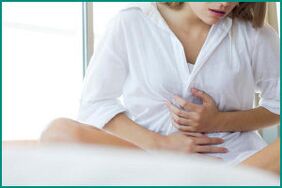
The postpartum period requires a lot of attention and monitoring of the postpartum woman, especially at home.Compliance with the rules of careful hygienic care and a frequent urination regimen will help avoid possible complications in the postpartum period and the appearance of urinary tract infections.
Postpartum cystitis presents like any other, but its treatment is complicated because not all medications can be taken by a nursing woman.In addition, this period is characterized by the presence of damage to the external genitalia, which makes it difficult to urinate and use the usual toilet.
Severe forms of the disease rarely develop, since the treatment of cystitis does not cause significant difficulties.But most often we have to deal with a chronic form that is difficult to correct with medications if the causative agent is a multi-resistant microorganism.
Diagnosis
It usually does not cause difficulties after a thorough history, urinalysis and examination of the patient.The results of the analysis reveal deviations from the norm: reduced specific gravity, altered pH level, presence of pathological impurities in the blood, leukocytes, sediment, urate and oxalate crystals.
If necessary, ultrasound and X-ray contrast imaging are prescribed to clarify the etiology of the disease.
Treatment
It is imperative to treat acute or chronic cystitis comprehensively.The simultaneous use of different therapeutic methods contributes to the rapid recovery of the patient.
The main therapeutic agents are:
- antimicrobial tablets;
- anti-inflammatory medications;
- analgesics and antispasmodics;
- physiotherapy (in remission);
- diet;
- traditional methods.
Medications for the treatment of cystitis are prescribed by a specialist.Anti-inflammatory drugs from the non-steroidal group are preferably prescribed;They have antispasmodic and analgesic activity.
The diet involves excluding from the diet sour, pickled and spicy foods that have an irritating effect.In this case, it is necessary to drink at least two liters of liquid a day to disinfect the bladder.
Popular recipes
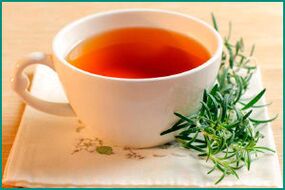
Alternative medicine has gained extensive experience in the treatment of urological infections.The recipes have many positive reviews, which confirms the effectiveness of the methods.But they can only be used in combination with pharmacological treatment.
Good results are obtained by ingesting decoctions of parsley root, chamomile and tincture of lingonberry leaves.Drinking cranberry juice has an excellent disinfecting effect.The healing qualities of "bear ears" and cranberries have been known for a long time.You can prepare the following composition and take it three times a day after meals:
- take dried herbs of rosemary, celery, centaury and rose hips in equal proportions;
- pour boiling water for 30 minutes;
- boil in a water bath for 20 minutes;
- leave to act for 30 minutes;
- strain and drink as above.
It is contraindicated to drink alcohol, strong drinks or smoke during treatment.
Prevention
Measures to prevent cystitis are simple but effective.It is necessary to carefully follow the rules of care, sexual culture, frequently change hygiene products and underwear, avoid hypothermia and the consumption of irritating foods and drinks.
























